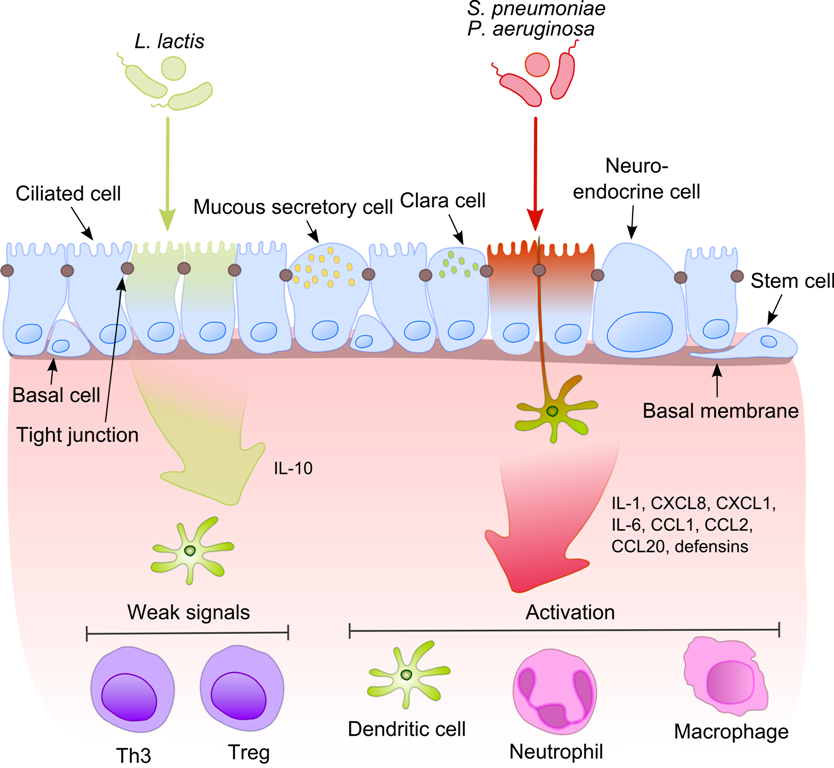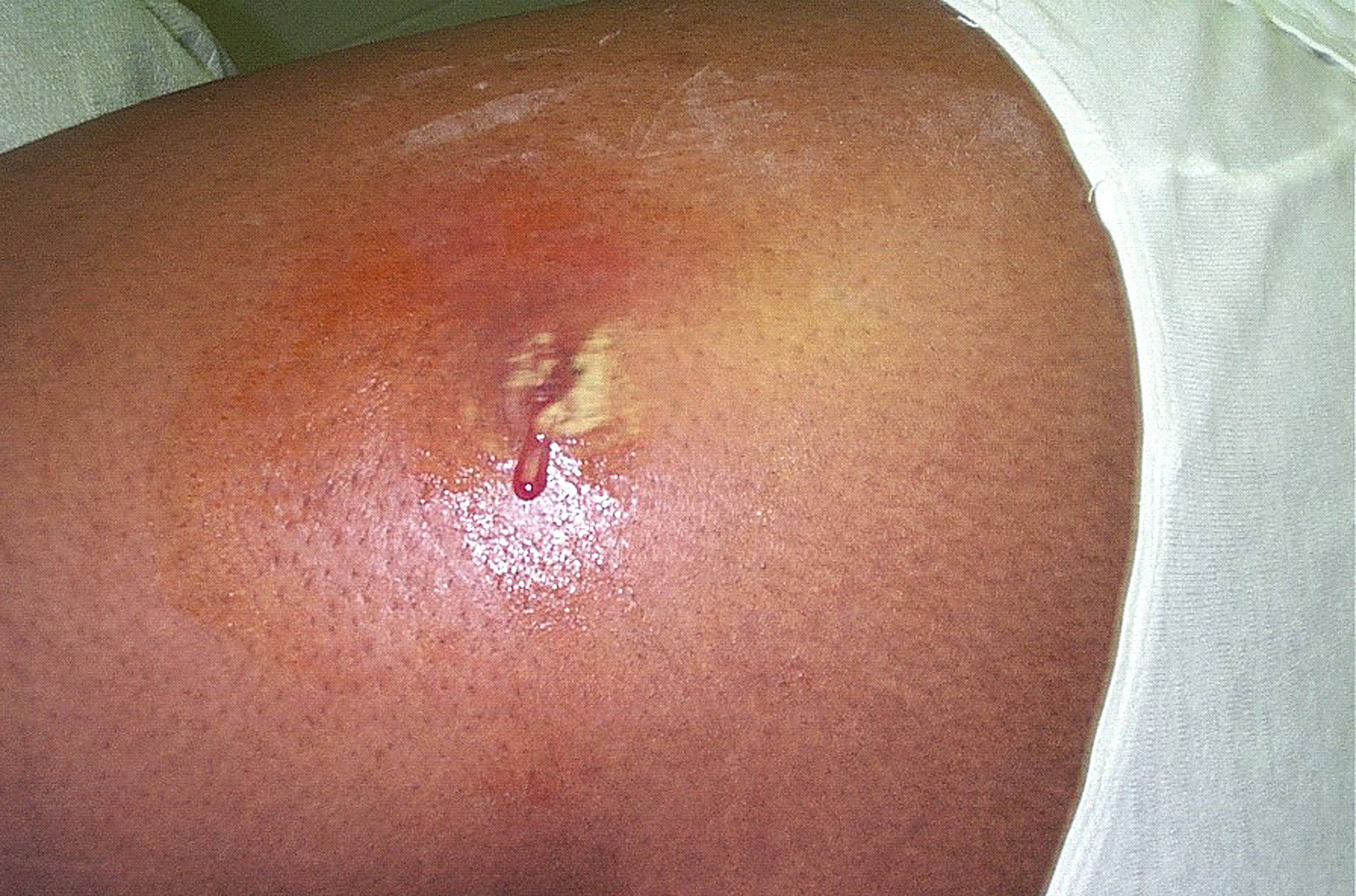|
Enteroinvasive Escherichia Coli
Enteroinvasive ''Escherichia coli'' (EIEC) is a type of pathogenic bacteria whose infection causes a syndrome that is identical to shigellosis, with profuse diarrhea and high fever. EIEC are highly invasive, and they use adhesin proteins to bind to and enter intestinal cells. They produce no toxins, but severely damage the intestinal wall through mechanical cell destruction. EIEC are closely related to ''Shigella'', like all ''E. coli'' are. Their similarity in disease phenotype come from a homologous large virulence plasmid pINV. They also have in common in their loss of cadaverine synthesis, of '' ompT'', and of curli formation. These features are probably acquired independently, as the two lost cadaverine synthesis in different ways. Moreover, the "EIEC" does not form a monophyletic group in ''E. coli''. After the ''E. coli'' strain penetrates through the epithelial wall, the endocytosis vacuole gets lysed, the strain multiplies using the host cell machinery, and extends to t ... [...More Info...] [...Related Items...] OR: [Wikipedia] [Google] [Baidu] |
Pathogenic Bacteria
Pathogenic bacteria are bacteria that can cause disease. This article focuses on the bacteria that are pathogenic to humans. Most species of bacteria are harmless and many are Probiotic, beneficial but others can cause infectious diseases. The number of these pathogenic species in humans is estimated to be fewer than a hundred. By contrast, several thousand species are considered part of the gut flora, with a few hundred species present in each individual human's digestive tract. The body is continually exposed to many species of bacteria, including beneficial commensals, which grow on the skin and mucous membranes, and saprophytes, which grow mainly in the soil and in decomposition, decaying matter. The blood and tissue fluids contain nutrients sufficient to sustain the growth of many bacteria. The body has defence mechanisms that enable it to resist microbial invasion of its tissues and give it a natural immune system, immunity or innate immunity, innate resistance against man ... [...More Info...] [...Related Items...] OR: [Wikipedia] [Google] [Baidu] |
Dysentery
Dysentery ( , ), historically known as the bloody flux, is a type of gastroenteritis that results in bloody diarrhea. Other symptoms may include fever, abdominal pain, and a feeling of incomplete defecation. Complications may include dehydration. The cause of dysentery is usually the bacteria from genus '' Shigella'', in which case it is known as shigellosis, or the amoeba '' Entamoeba histolytica''; then it is called amoebiasis. Other causes may include certain chemicals, other bacteria, other protozoa, or parasitic worms. It may spread between people. Risk factors include contamination of food and water with feces due to poor sanitation. The underlying mechanism involves inflammation of the intestine, especially of the colon. Efforts to prevent dysentery include hand washing and food safety measures while traveling in countries of high risk. While the condition generally resolves on its own within a week, drinking sufficient fluids such as oral rehydration solutio ... [...More Info...] [...Related Items...] OR: [Wikipedia] [Google] [Baidu] |
Bacterial Diseases
Pathogenic bacteria are bacteria that can cause disease. This article focuses on the bacteria that are pathogenic to humans. Most species of bacteria are harmless and many are beneficial but others can cause infectious diseases. The number of these pathogenic species in humans is estimated to be fewer than a hundred. By contrast, several thousand species are considered part of the gut flora, with a few hundred species present in each individual human's digestive tract. The body is continually exposed to many species of bacteria, including beneficial commensals, which grow on the skin and mucous membranes, and saprophytes, which grow mainly in the soil and in decaying matter. The blood and tissue fluids contain nutrients sufficient to sustain the growth of many bacteria. The body has defence mechanisms that enable it to resist microbial invasion of its tissues and give it a natural immunity or innate resistance against many microorganisms. Pathogenic bacteria are specially ... [...More Info...] [...Related Items...] OR: [Wikipedia] [Google] [Baidu] |
Sereny Test
The Sereny test is a test used to test the invasiveness of enteroinvasive ''Escherichia coli'', ''Shigella'' species, and ''Listeria monocytogenes''. It is done by inoculating suspension of bacteria into guinea pig's eye. Severe mucopurulent conjunctivitis and severe keratitis Keratitis is a condition in which the human eye, eye's cornea, the clear dome on the front surface of the eye, becomes inflammation, inflamed. The condition is often marked by moderate to intense pain and usually involves any of the following sy ... indicates a positive test. References Medical tests Microbiology techniques {{Med-diagnostic-stub ... [...More Info...] [...Related Items...] OR: [Wikipedia] [Google] [Baidu] |
Traveler's Diarrhea
Travelers' diarrhea (TD) is a stomach and intestinal infection. TD is defined as the passage of unformed stool (one or more by some definitions, three or more by others) while traveling. It may be accompanied by abdominal cramps, nausea, fever, headache and bloating. Occasionally dysentery may occur. Most travelers recover within three to four days with little or no treatment. About 12% of people may have symptoms for a week. Bacteria are responsible for more than half of cases, typically via foodborne illness and waterborne diseases. The bacteria enterotoxigenic ''Escherichia coli'' (ETEC) are typically the most common except in Southeast Asia, where '' Campylobacter'' is more prominent. About 10 to 20 percent of cases are due to norovirus. Protozoa such as ''Giardia'' may cause longer term disease. The risk is greatest in the first two weeks of travel and among young adults. People affected are more often from the developed world. Recommendations for prevention include eat ... [...More Info...] [...Related Items...] OR: [Wikipedia] [Google] [Baidu] |
Hemolytic Uremic Syndrome
Hemolysis or haemolysis (), also known by several other names, is the rupturing ( lysis) of red blood cells (erythrocytes) and the release of their contents (cytoplasm) into surrounding fluid (e.g. blood plasma). Hemolysis may occur in vivo or in vitro. One cause of hemolysis is the action of hemolysins, toxins that are produced by certain pathogenic bacteria or fungi. Another cause is intense physical exercise. Hemolysins damage the red blood cell's cytoplasmic membrane, causing lysis and eventually cell death. Etymology From hemo- + -lysis, from Ancient Greek (, 'blood') + , 'loosening'). Inside the body Hemolysis inside the body can be caused by a large number of medical conditions, including some parasites (''e.g.'', ''Plasmodium''), some autoimmune disorders (''e.g.'', autoimmune haemolytic anaemia, drug-induced hemolytic anemia, atypical hemolytic uremic syndrome (aHUS)), some genetic disorders (''e.g.'', Sickle-cell disease or G6PD deficiency), or blood ... [...More Info...] [...Related Items...] OR: [Wikipedia] [Google] [Baidu] |
Malaise
In medicine, malaise is a feeling of general discomfort, uneasiness or lack of wellbeing and often the first sign of an infection or other disease. It is considered a vague termdescribing the state of simply not feeling well. The word has existed in French since at least the 12th century. The term is often used figuratively in other contexts, in addition to its meaning as a general state of angst or melancholia. Cause Malaise is a non-specific symptom and can be present in the slightest ailment, such as an emotion (causing fainting, a vasovagal response) or hunger (light hypoglycemia), to the most serious conditions (cancer, stroke, heart attack, internal bleeding, etc.). Malaise expresses a patient's uneasiness that "something is not right" that may need a medical examination to determine the significance. Malaise is thought to be caused by the activation of an immune response, and the associated pro-inflammatory cytokines. Figurative use " Economic malaise" refers t ... [...More Info...] [...Related Items...] OR: [Wikipedia] [Google] [Baidu] |
Colitis
Colitis is swelling or inflammation Inflammation (from ) is part of the biological response of body tissues to harmful stimuli, such as pathogens, damaged cells, or irritants. The five cardinal signs are heat, pain, redness, swelling, and loss of function (Latin ''calor'', '' ... of the large intestine (colon (anatomy), colon). Colitis may be acute (medicine), acute and self-limited or chronic condition, long-term. It broadly fits into the category of digestive diseases. In a medical context, the label ''colitis'' (without qualification) is used if: * The cause of the inflammation in the colon is undetermined; for example, ''colitis'' may be applied to ''Crohn's disease'' at a time when the diagnosis is unknown, or * The context is clear; for example, an individual with ulcerative colitis is talking about their disease with a physician who knows the diagnosis. Signs and symptoms The sign (medicine), signs and symptoms of colitis are quite variable and dependent on the ca ... [...More Info...] [...Related Items...] OR: [Wikipedia] [Google] [Baidu] |
Diarrhea
Diarrhea (American English), also spelled diarrhoea or diarrhœa (British English), is the condition of having at least three loose, liquid, or watery bowel movements in a day. It often lasts for a few days and can result in dehydration due to fluid loss. Signs of dehydration often begin with loss of the normal stretchiness of the skin and irritable behaviour. This can progress to decreased urination, loss of skin color, a fast heart rate, and a decrease in responsiveness as it becomes more severe. Loose but non-watery stools in babies who are exclusively breastfed, however, are normal. What is diarrhea? How is it caused, treated and prevented? (see also script)The most common cause is an infection of the intestines due to a virus, bacterium, or parasite—a condition also known as gastroenteritis. These infections are often acquired from food or water that has been contaminated by feces, or directly from another person who is infected. The three types of diarrhea ... [...More Info...] [...Related Items...] OR: [Wikipedia] [Google] [Baidu] |
Shigellosis
Shigellosis, known historically as dysentery, is an infection of the intestines caused by ''Shigella'' bacteria. Symptoms generally start one to two days after exposure and include diarrhea, fever, abdominal pain, and feeling the need to pass stools even when the bowels are empty. The diarrhea may be bloody. Symptoms typically last five to seven days and it may take several months before bowel habits return entirely to normal. Complications can include reactive arthritis, sepsis, seizures, and hemolytic uremic syndrome. Shigellosis is caused by four specific types of ''Shigella''. These are typically spread by exposure to infected feces. This can occur via contaminated food, water, or hands or sexual contact. Contamination may be spread by flies or when changing diapers (nappies). Diagnosis is by stool culture. The risk of infection can be reduced by properly washing the hands. There is no vaccine. Shigellosis usually resolves without specific treatment. Rest, and suffic ... [...More Info...] [...Related Items...] OR: [Wikipedia] [Google] [Baidu] |
Plasmid
A plasmid is a small, extrachromosomal DNA molecule within a cell that is physically separated from chromosomal DNA and can replicate independently. They are most commonly found as small circular, double-stranded DNA molecules in bacteria and archaea; however plasmids are sometimes present in and eukaryotic organisms as well. Plasmids often carry useful genes, such as those involved in antibiotic resistance, virulence, secondary metabolism and bioremediation. While chromosomes are large and contain all the essential genetic information for living under normal conditions, plasmids are usually very small and contain additional genes for special circumstances. Artificial plasmids are widely used as vectors in molecular cloning, serving to drive the replication of recombinant DNA sequences within host organisms. In the laboratory, plasmids may be introduced into a cell via transformation. Synthetic plasmids are available for procurement over the internet by various vendors ... [...More Info...] [...Related Items...] OR: [Wikipedia] [Google] [Baidu] |
Lysis
Lysis ( ; from Greek 'loosening') is the breaking down of the membrane of a cell, often by viral, enzymic, or osmotic (that is, "lytic" ) mechanisms that compromise its integrity. A fluid containing the contents of lysed cells is called a ''lysate''. In molecular biology, biochemistry, and cell biology laboratories, cell cultures may be subjected to lysis in the process of purifying their components, as in protein purification, DNA extraction, RNA extraction, or in purifying organelles. Many species of bacteria are subject to lysis by the enzyme lysozyme, found in animal saliva, egg white, and other secretions. Phage lytic enzymes (lysins) produced during bacteriophage infection are responsible for the ability of these viruses to lyse bacterial cells. Penicillin and related β-lactam antibiotics cause the death of bacteria through enzyme-mediated lysis that occurs after the drug causes the bacterium to form a defective cell wall. If the cell wall is completely lost and ... [...More Info...] [...Related Items...] OR: [Wikipedia] [Google] [Baidu] |



